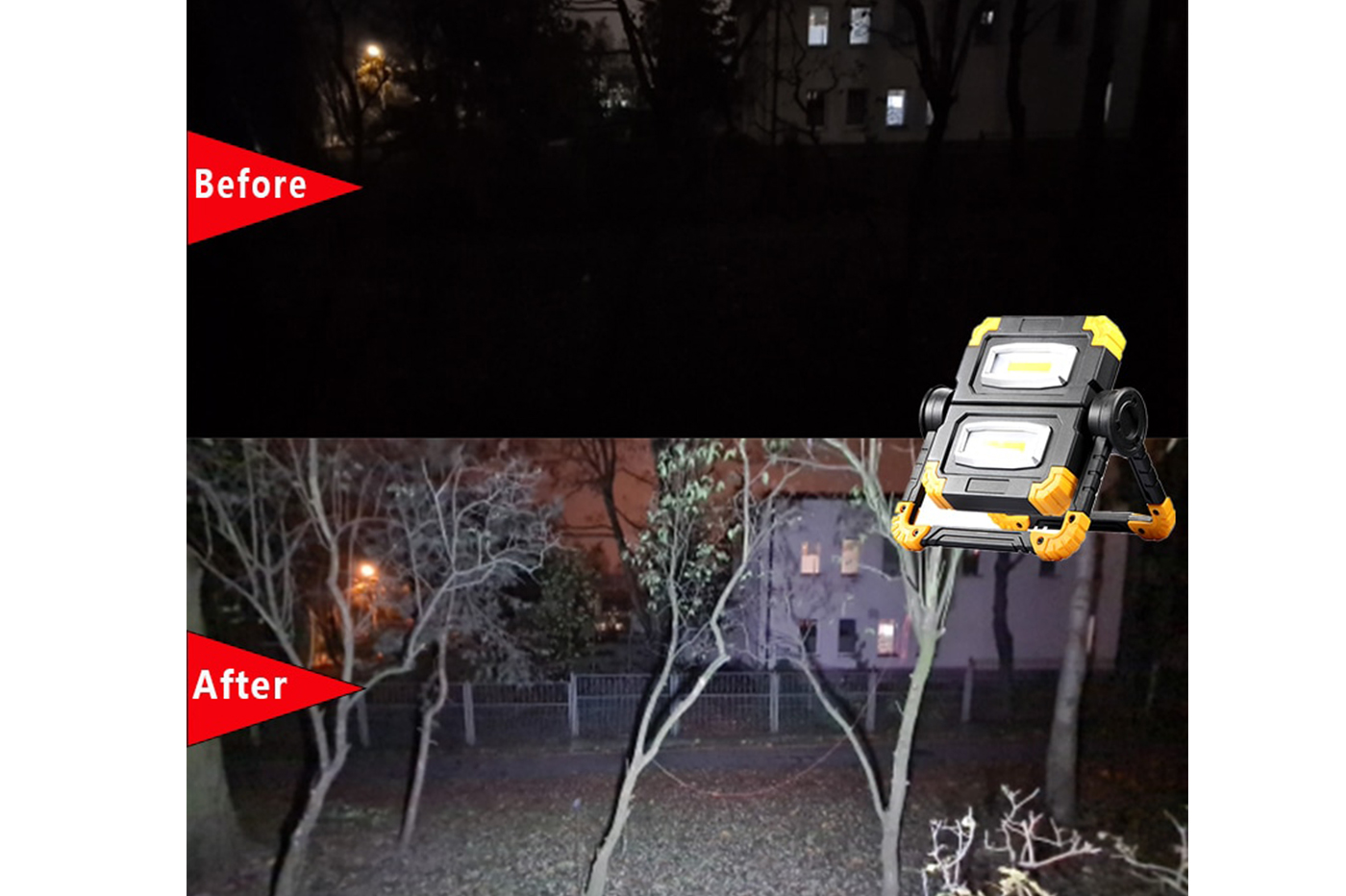
Faro led portatile 3W, 170 lm, portata 250 metri, ricaricabile con adattatore 220V, 12V e cavo USB - Velamp IR554LED.012S

GAOEEIN 2pcs 30W Faretto LED Batteria Faro LED Ricaricabile IP65 Impermeabili Portatile Luci da Lavoro Lampade Emergenza per Cortile, Garage, Pesca, Lavoro All'aperto : Amazon.it: Fai da te

Faro LED Ricaricabile 100W, Faretto LED Ricaricabile 336LEDs/ 12000mAh/ Pannello Solare/ 4 Modalità di Illuminazione/Funzione Magnete, Faro LED Batteria Ideale per Campeggio, Lavoro, Pesca : Amazon.it: Fai da te

CREATESTAR Faro LED Ricaricabile 100W, Faretto Cantiere Led Solare con 4 Modalità Luminose Batteria da 12000 mAh Portatile, per Campeggio,Riparazione,Pesca : Amazon.it: Fai da te

Faro LED ricaricabile con supporto Faro da cantiere impermeabile ricaricabile variabile | Leroy Merlin

FARO MULTIFUNZIONE A LED RICARICABILE CON USB - 0123 | Torce e lampade a batteria | Illuminazione e riscaldatori | General tools | Fervi Pro smart equipment

Faro Luce LED Ricaricabile 80W, Luci LED da Portatile con USB, 4 Modalità Luci da Lavoro Campeggio Impermeabile Lampcon Batteria Ricaricabile Integrata 11000 mAh per Cantiere, Riparazioni Auto : Amazon.it: Fai da te

ERAY Faro LED Ricaricabile, Faro da Lavoro a Batteria Portatile 70 LEDs 6000LM/ 10000mAh/ Pannello Solare/ 4 Modalità di Illuminazione/Base Magnetica, Ideale per Campeggio, Riparazione, Pesca, Nero : Amazon.it: Fai da te

F7-20W - Faretti Da Esterno - - Faro led Torcia da 20w Fari Ricaricabile Portabile Con staffa Incluso Batteria

BES-30761 - Lampade Emergenza - beselettronica - Faro LED Portatile Torcia lavoro Ricaricabile Pieghevole Rotazione 360 TE-B0343

BES-29478 - Fari - beselettronica - Faro Led 100W Pieghevole Luce Fredda Faretto Portatile Ricaricabile Impermeabile

BES-29478 - Fari - beselettronica - Faro Led 100W Pieghevole Luce Fredda Faretto Portatile Ricaricabile Impermeabile

CLV Faro Luce LED Portatile 60W, Faro LED Ricaricabile USB & Solare con 12000mAh Batteria, 4 Modalità di Illuminazione 5 Luminosità, Luci da Lavoro per Cantiere, Garage, Campeggio, Emergenza : Amazon.it: Altro

Hacevida Faro LED Ricaricabile, 100W Faretto LED da Cantiere Batteria da 14000 mAh/120 perle LED/4 Modalità/Pannello Solare/Power Bank, Ideale per Emergenza, Campeggio, Lavoro, Pesca : Amazon.it: Fai da te

FARO LED RICARICABILE DA LAVORO 120W, LAMPADA PORTATILE CON PANNELLO RICARICA SOLARE, FARETTO LED LUCE FREDDA CALDA RGB, LUCE LED PORTATILE POWER BANK - DISCORAMA® : Amazon.it: Illuminazione

F7-20W - Faretti Da Esterno - - Faro led Torcia da 20w Fari Ricaricabile Portabile Con staffa Incluso Batteria

ERAY Faro LED Ricaricabile 150W, Faretto LED da Cantiere Portatile 5 Modalità/Batteria da 15000mAh/296 perle LED/Pannello Solare/Power Bank, Ideale per Emergenza, Campeggio, Riparazione : Amazon.it: Illuminazione

7000LM Faro LED Ricaricabile, Solare LED Faretto Batteria 4 Modalità Proiettore LED 12000mAh Ricarica USB Lampada da Luce Lavoro LED Pieghevole(Not Including Tripod) : Amazon.it: Illuminazione

F7-20W - Faretti Da Esterno - - Faro led Torcia da 20w Fari Ricaricabile Portabile Con staffa Incluso Batteria

100W Faro LED Ricaricabile Portatile Solare, Tayire 5 Modalità Faretto LED Luce LED Ricaricabile, Lampada da Campeggio LED con Cavo USB, 11000mAh Proiettore LED Esterni per Campeggio, Lavoro, Pesca : Amazon.it: Illuminazione

Saponhonix Faro LED Ricaricabile 200W, Faretto Cantiere LED Solare con 5 Modalità Luminose, Faretto Lampada LED Ricaricabile Portatile Solare per Cantiere, Intrattenimento, Emergenza : Amazon.it: Fai da te

Faro LED Ricaricabile 60W, CLV Faretto LED Ricaricabile USB 12000mAh Lampada da Lavoro 4 Modalità di Illuminazione 5 Luminosità Luce Portatile Magnete Luci LED Portatile per Campeggio Cantiere : Amazon.it: Fai da te

ERAY Faro LED Ricaricabile, Faro da Lavoro a Batteria Portatile 72 LEDs 8000LM/ 13500mAh/ Pannello Solare/ 4 Modalità di Illuminazione/Telecomando, Ideale per Campeggio, Riparazione, Pesca : Amazon.it: Illuminazione

ERAY Faro LED Ricaricabile 150W, Faretto LED da Cantiere Portatile 5 Modalità/Batteria da 15000mAh/296 perle LED/Pannello Solare/Power Bank, Ideale per Emergenza, Campeggio, Riparazione : Amazon.it: Illuminazione
























